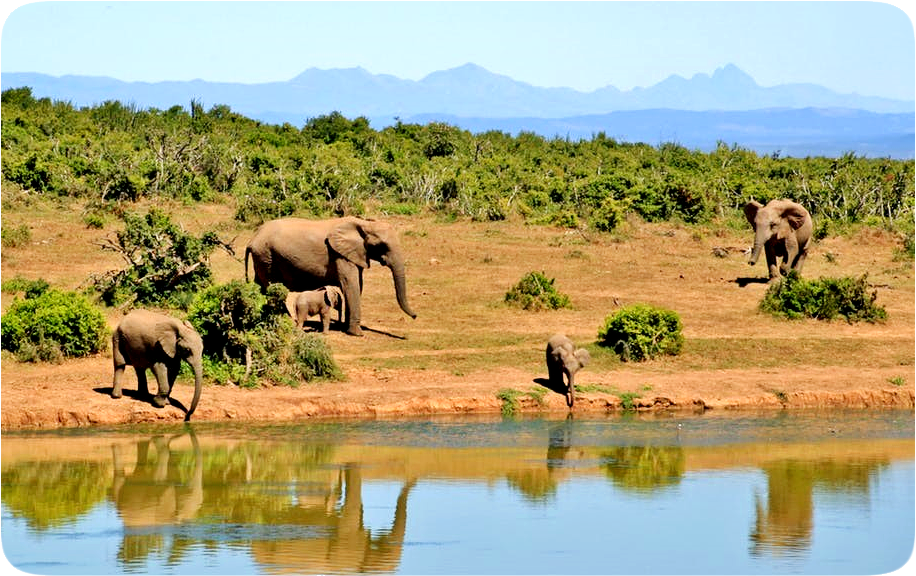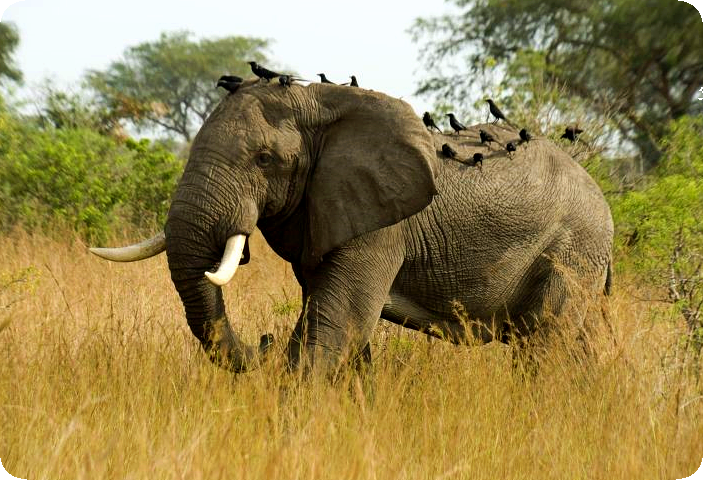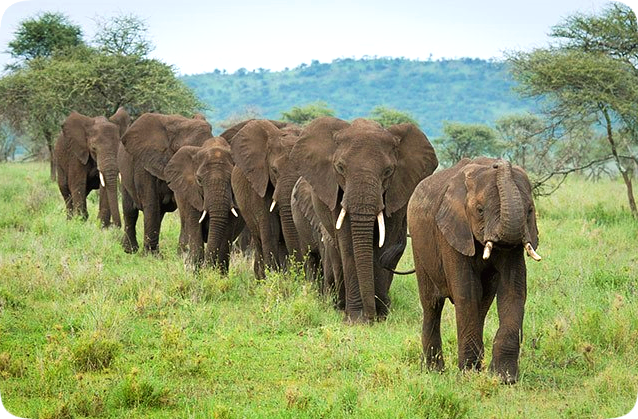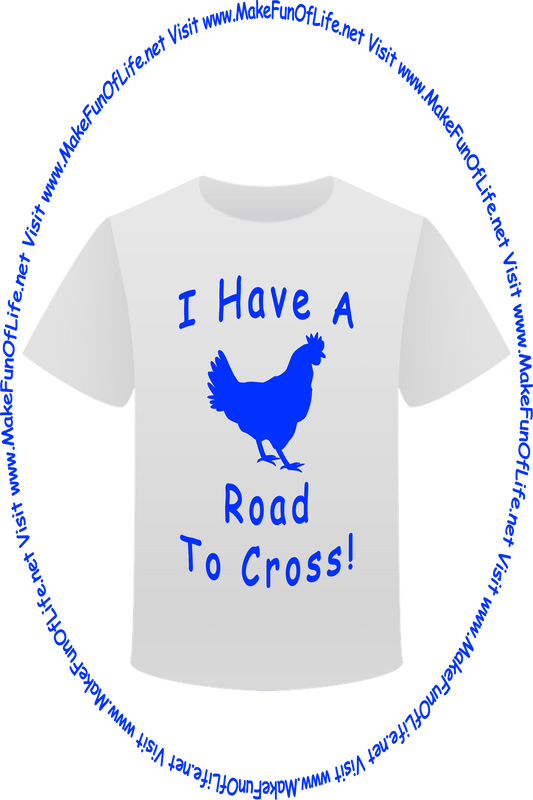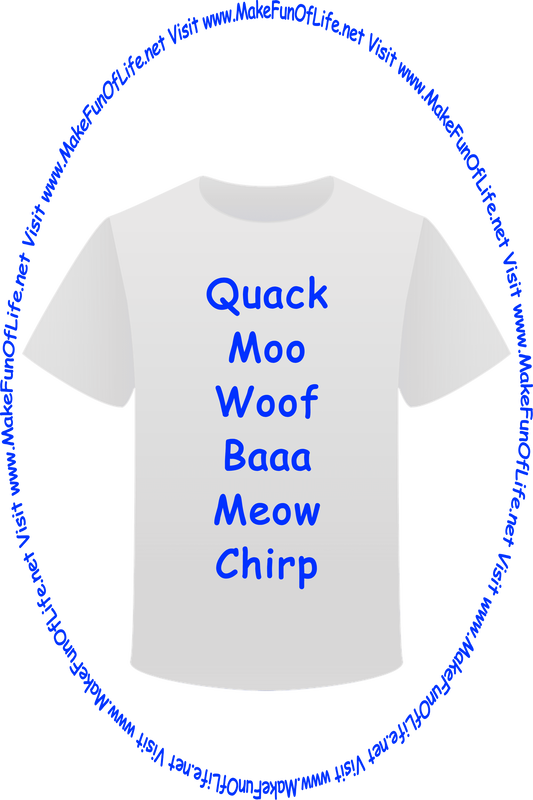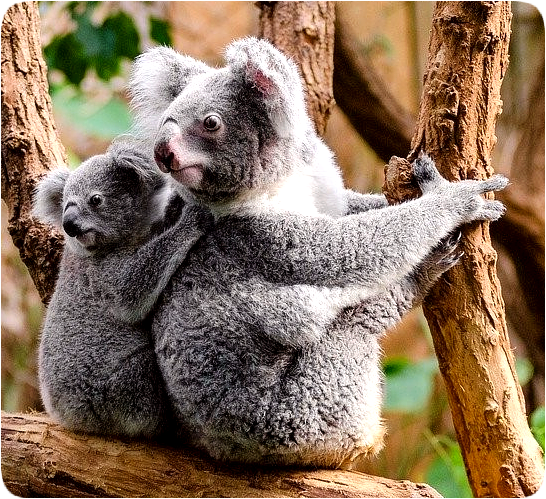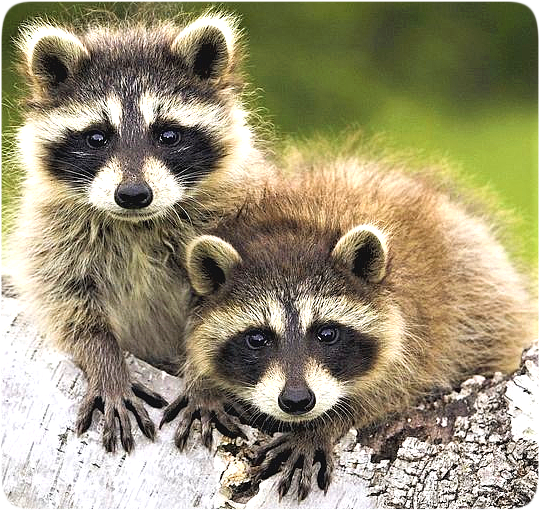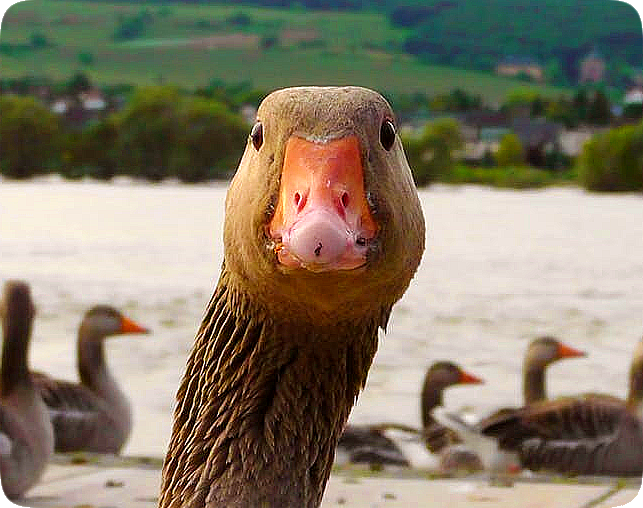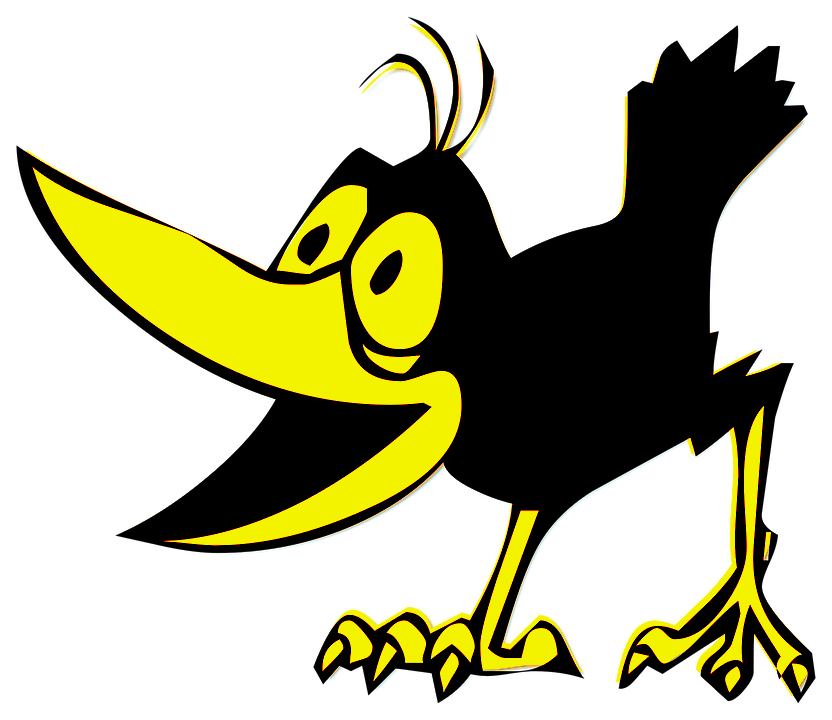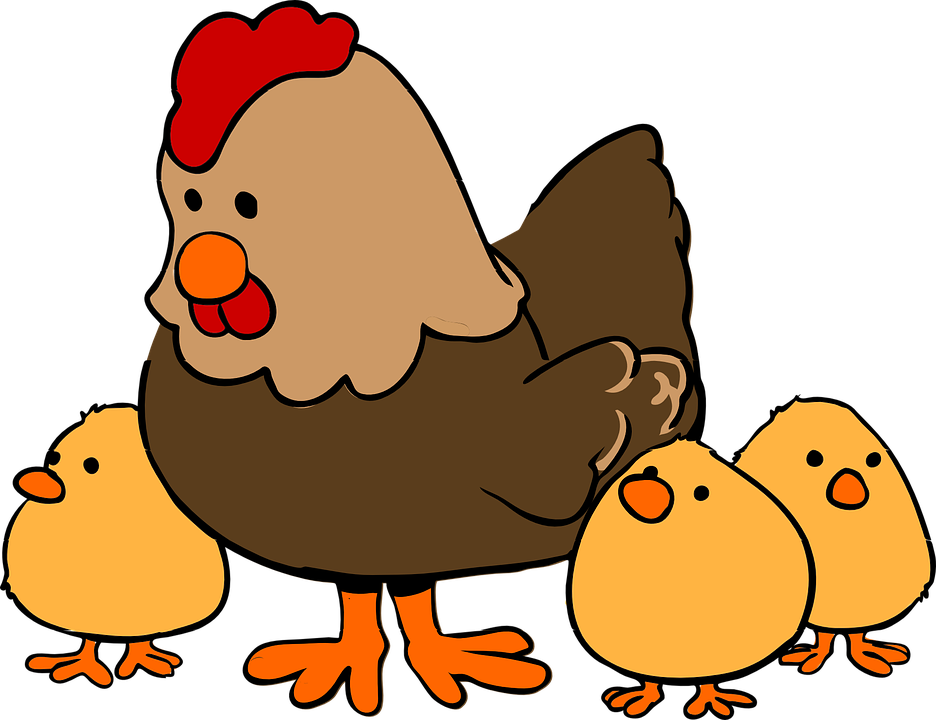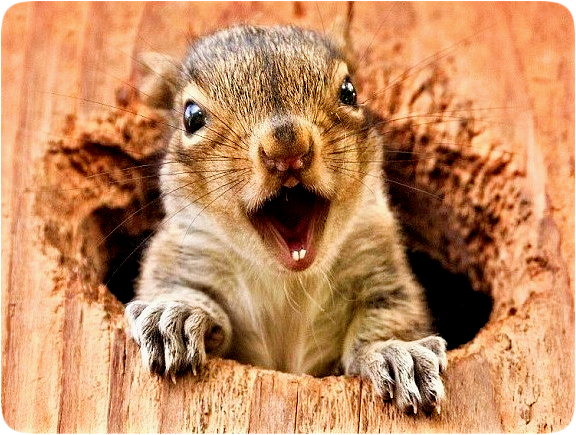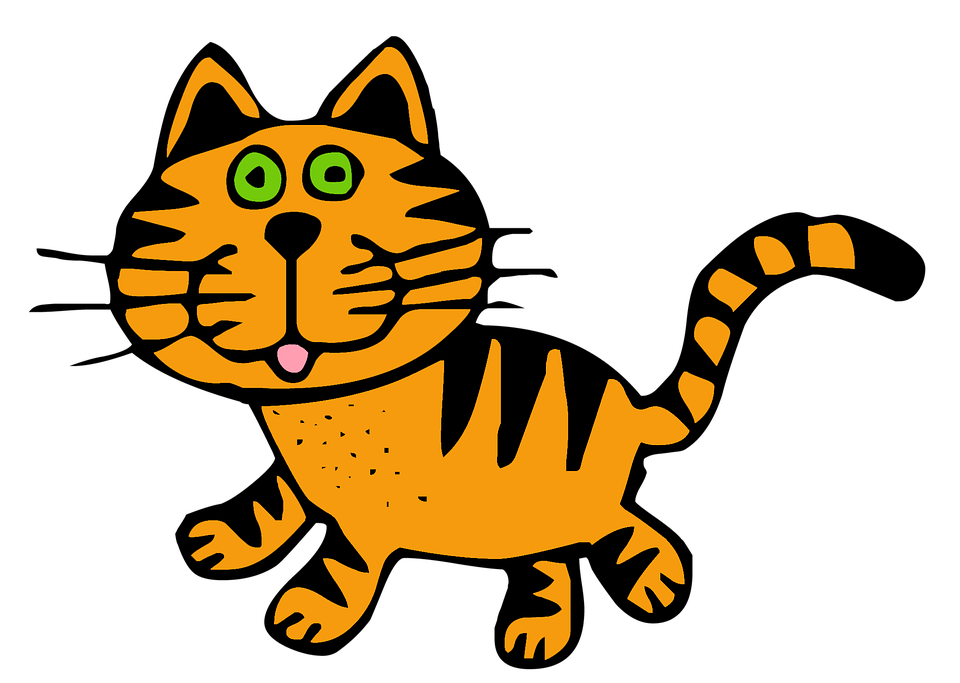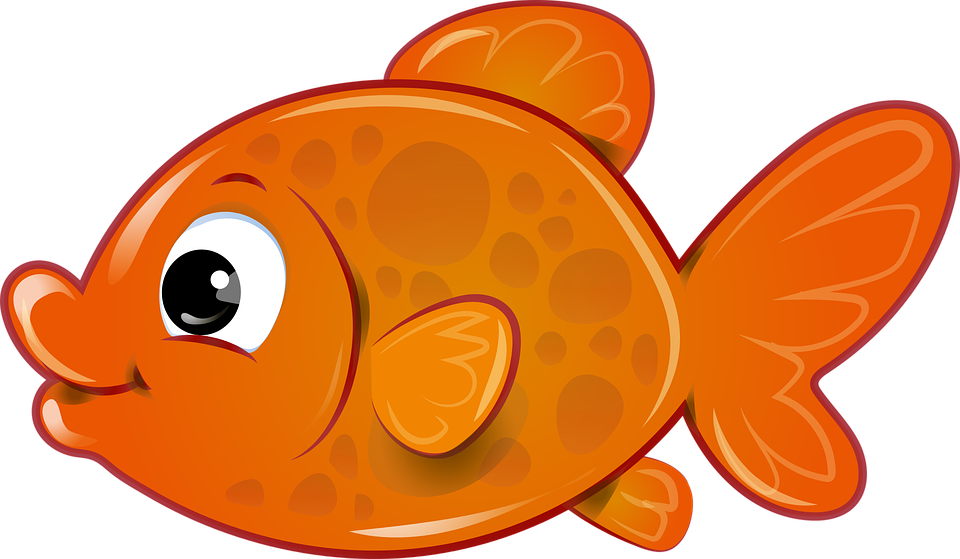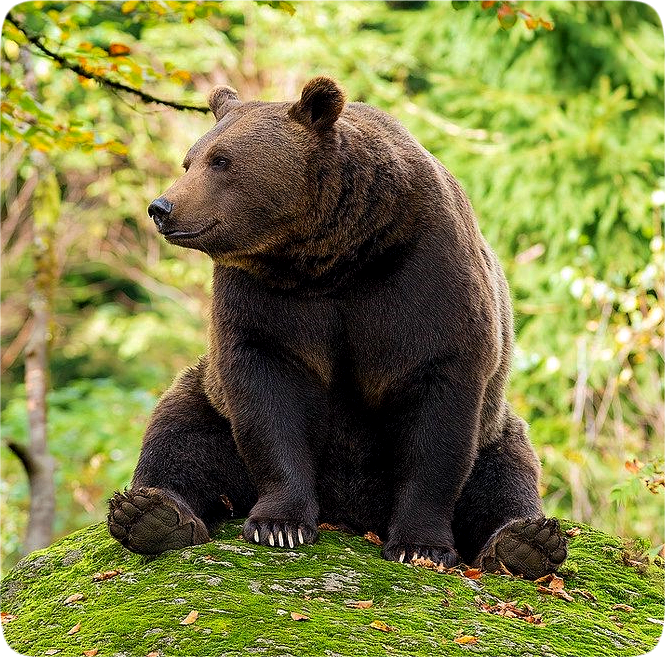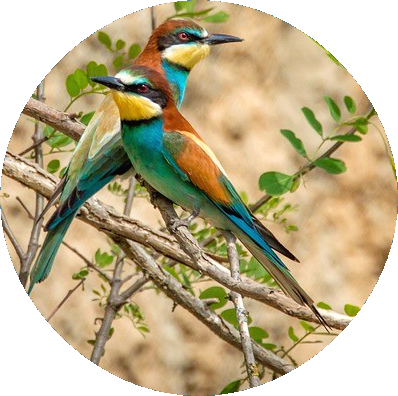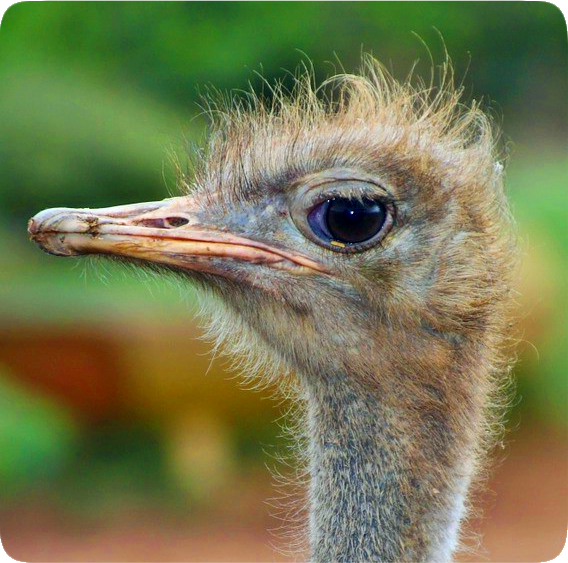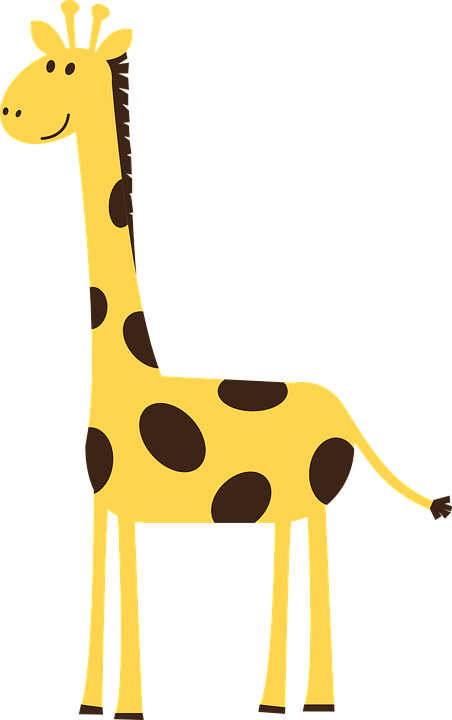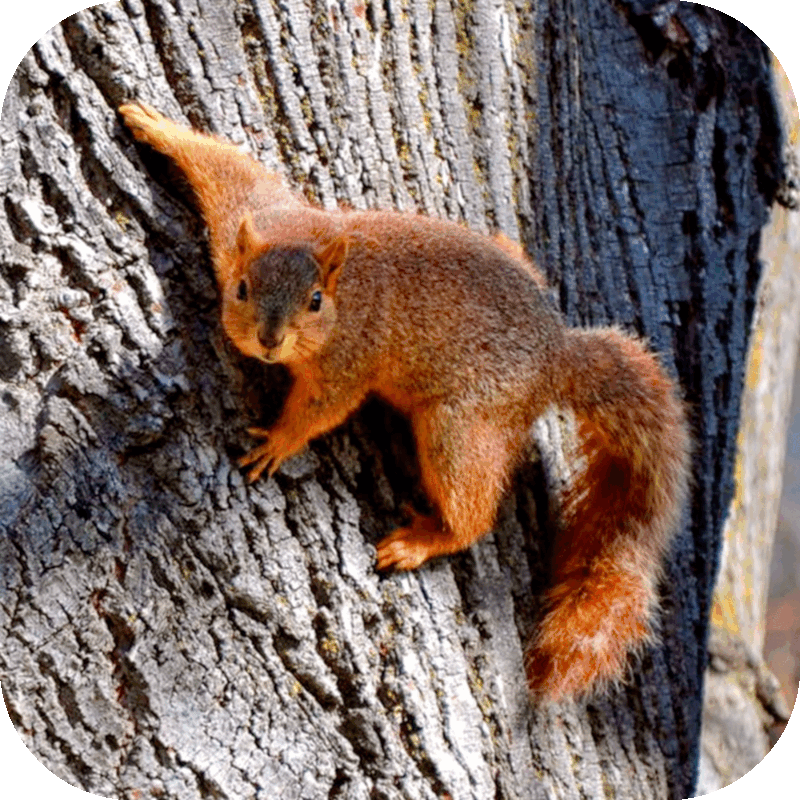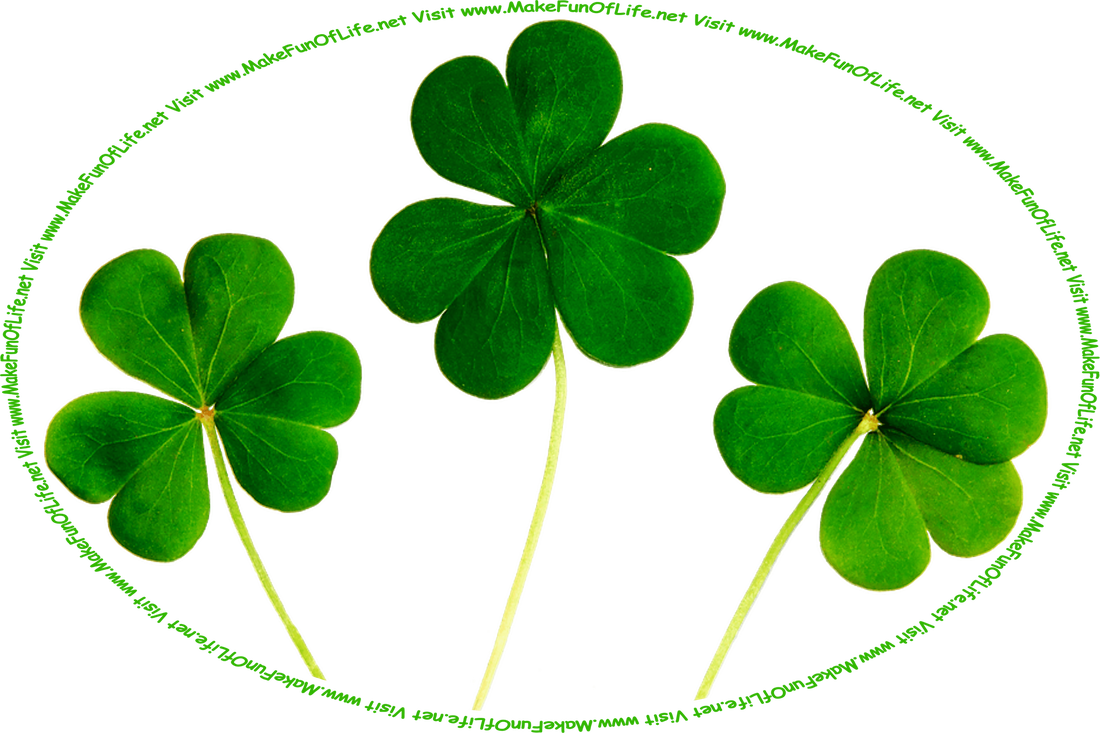William: What is gray and tons of fun?
Katherine: An elephant!
The Elephant
The elephant is quite a beast,
He’s rather large to say the least,
And though his size is quite impressive,
The elephant is not aggressive,
He never throws his weight around,
Still he always holds his ground.
He only wants to feel secure.
Long may the elephant endure!
by Arnold Sundgaard (Arnold Olaf Sundgaard (1909 - 2006))
Minerva: What is big and gray and goes, “Bubble-bubble-ka-boom!”
Minnie: An elephant experimenting with a chemistry set.
Elephants Facts
- An adult male elephant is called a bull.
- An adult female elephant is called a cow.
- A young elephant is called a calf.
- The plural of elephant is elephants.
- A group of elephants is called a herd, or imaginatively, a memory.
- A group of elephants walking in single-file is called a parade.
- The sound made by elephants is called trumpeting.
- Elephants are the largest land animals on Earth.
- Elephants are herbivores, or plants-eaters.
Terry: How can you tell when there are elephants in your refrigerator?
Theresa: You can hear them giggling.
Elephants belong to the family of animals known as pachyderms, meaning thick-skinned animals. Other members of the pachyderm family are rhinoceroses, hippopotamuses, pigs, tapirs, and extinct wooly mammoths and mastodons.
Sandra: Why do elephants catch colds?
Sandy: Well, you would too, if you ran around all the time without any clothes on!
The two main types of elephants are the African elephant and the Asian elephant.
Lee: What is the difference between African elephants and Asian elephants?
Lars: About three thousand miles!
Both male and female African elephants have tusks. Their ears are about 1.5 meters (5 feet) long. African elephants are known by the scientific name Loxodonta africana. They are divided into two subspecies: the African Forest Elephant and the African Bush Elephant.
Bill: Why do elephants live in the jungle?
Glen: Because they are too big to fit in Tarzan’s treehouse.
Asian elephants have smaller bodies and smaller ears than African elephants, and only the males of the Asian elephants have tusks. The scientific name for Asian elephants is Elephas maximus. The four subspecies of Asian elephants are Indian, Ceylon, Sumatran, and Malaysian.
Marybeth: What is gray and weighs 200 pounds?
Maribelle: A bouncing baby elephant!
Newborn baby elephants weight about 91 kilograms (200 pounds). Adult elephants weigh between 2,268 and 6,350 kilograms (5,000 and 14,000 pounds). Some male elephants can grow to be 4 meters (13 feet tall) and weigh between 4,536 and 6,350 kilograms (10,000 and 14,000 pounds). The largest elephant on record weighed about 12,000 kilograms (26,000 pounds).
Darlene: What do elephants say when they bump into each other?
Charlene: “Small world, isn’t it?”
Elephants are the only mammals that cannot jump, and that is good, because the last thing we need is more earthquakes!
Hickory dickory dock,
An elephant ran up the clock,
The clock is being repaired.
Arvin: How can you tell that elephants are always ready for adventure?
Allen: They always have their trunks ready to go!
Anne: What has four legs and a trunk?
Drew: An elephant?
Anne: A mouse going on vacation - fooled you!
After their size, the most noticeable feature of elephants is their trunks. A trunk is an elongation of an elephant’s nose and upper lip. An elephant’s trunk can grow to be about 2 meters (6.5 feet) long, and has about 40,000 muscles, but contains no bones. Besides being used for breathing and smelling, the trunk can be used in much the same way that humans use their arms and hands. Elephants are able to sense the size, shape, texture, and temperature of objects by feeling with their trunks. Elephants have two finger-like projections at the tips of their trunks, which can be used to manipulate and grasp small objects and to pluck grass and leaves to eat. Elephants use their trunks to lift food and to suck up water, which they then pour into their mouths. In summary, elephant’s trunks are very useful tools.
Michelle: Why do elephants have trunks?
Mabelle: Because glove compartments are not nearly so stylish.
Geronimo: What do you say when you scold an elephant?
Tecumseh: “Tusk! Tusk!”
Elephants have pairs of tusks, which are long teeth made of a substance called ivory. Elephant tusks grow throughout their lifetimes and can weigh more than 200 pounds. Their tusks help them obtain food and dig in the ground for water. Elephants can also use their tusks to carry heavy objects such as tree trunks.
Jeremy: What is big and gray and protects you from the rain?
Jered: An umbrellaphant!
Elephants have large, thin ears. Within them is a complex network of blood vessels. As blood circulates through their ears, it releases heat into the air. Elephants can flap their ears, causing the blood within them to release heat at an even faster rate. The cooled blood then circulates through the rest of the elephants’ massive bodies, helping to keep elephants cool in the hot climates where they live.
Pete: What is big and gray and hums?
Paul: An electric elephant!
Rudy: Why do more elephants not go to college?
Ruby: Because so few of them graduate from high school.
Bernice: What is large, gray, and writes?
Brad: A ballpoint elephant!
Willow: Why do you never see elephants hiding up in trees?
Mahogany: Because they are really good at it.
Katherine: An elephant!
The Elephant
The elephant is quite a beast,
He’s rather large to say the least,
And though his size is quite impressive,
The elephant is not aggressive,
He never throws his weight around,
Still he always holds his ground.
He only wants to feel secure.
Long may the elephant endure!
by Arnold Sundgaard (Arnold Olaf Sundgaard (1909 - 2006))
Minerva: What is big and gray and goes, “Bubble-bubble-ka-boom!”
Minnie: An elephant experimenting with a chemistry set.
Elephants Facts
- An adult male elephant is called a bull.
- An adult female elephant is called a cow.
- A young elephant is called a calf.
- The plural of elephant is elephants.
- A group of elephants is called a herd, or imaginatively, a memory.
- A group of elephants walking in single-file is called a parade.
- The sound made by elephants is called trumpeting.
- Elephants are the largest land animals on Earth.
- Elephants are herbivores, or plants-eaters.
Terry: How can you tell when there are elephants in your refrigerator?
Theresa: You can hear them giggling.
Elephants belong to the family of animals known as pachyderms, meaning thick-skinned animals. Other members of the pachyderm family are rhinoceroses, hippopotamuses, pigs, tapirs, and extinct wooly mammoths and mastodons.
Sandra: Why do elephants catch colds?
Sandy: Well, you would too, if you ran around all the time without any clothes on!
The two main types of elephants are the African elephant and the Asian elephant.
Lee: What is the difference between African elephants and Asian elephants?
Lars: About three thousand miles!
Both male and female African elephants have tusks. Their ears are about 1.5 meters (5 feet) long. African elephants are known by the scientific name Loxodonta africana. They are divided into two subspecies: the African Forest Elephant and the African Bush Elephant.
Bill: Why do elephants live in the jungle?
Glen: Because they are too big to fit in Tarzan’s treehouse.
Asian elephants have smaller bodies and smaller ears than African elephants, and only the males of the Asian elephants have tusks. The scientific name for Asian elephants is Elephas maximus. The four subspecies of Asian elephants are Indian, Ceylon, Sumatran, and Malaysian.
Marybeth: What is gray and weighs 200 pounds?
Maribelle: A bouncing baby elephant!
Newborn baby elephants weight about 91 kilograms (200 pounds). Adult elephants weigh between 2,268 and 6,350 kilograms (5,000 and 14,000 pounds). Some male elephants can grow to be 4 meters (13 feet tall) and weigh between 4,536 and 6,350 kilograms (10,000 and 14,000 pounds). The largest elephant on record weighed about 12,000 kilograms (26,000 pounds).
Darlene: What do elephants say when they bump into each other?
Charlene: “Small world, isn’t it?”
Elephants are the only mammals that cannot jump, and that is good, because the last thing we need is more earthquakes!
Hickory dickory dock,
An elephant ran up the clock,
The clock is being repaired.
Arvin: How can you tell that elephants are always ready for adventure?
Allen: They always have their trunks ready to go!
Anne: What has four legs and a trunk?
Drew: An elephant?
Anne: A mouse going on vacation - fooled you!
After their size, the most noticeable feature of elephants is their trunks. A trunk is an elongation of an elephant’s nose and upper lip. An elephant’s trunk can grow to be about 2 meters (6.5 feet) long, and has about 40,000 muscles, but contains no bones. Besides being used for breathing and smelling, the trunk can be used in much the same way that humans use their arms and hands. Elephants are able to sense the size, shape, texture, and temperature of objects by feeling with their trunks. Elephants have two finger-like projections at the tips of their trunks, which can be used to manipulate and grasp small objects and to pluck grass and leaves to eat. Elephants use their trunks to lift food and to suck up water, which they then pour into their mouths. In summary, elephant’s trunks are very useful tools.
Michelle: Why do elephants have trunks?
Mabelle: Because glove compartments are not nearly so stylish.
Geronimo: What do you say when you scold an elephant?
Tecumseh: “Tusk! Tusk!”
Elephants have pairs of tusks, which are long teeth made of a substance called ivory. Elephant tusks grow throughout their lifetimes and can weigh more than 200 pounds. Their tusks help them obtain food and dig in the ground for water. Elephants can also use their tusks to carry heavy objects such as tree trunks.
Jeremy: What is big and gray and protects you from the rain?
Jered: An umbrellaphant!
Elephants have large, thin ears. Within them is a complex network of blood vessels. As blood circulates through their ears, it releases heat into the air. Elephants can flap their ears, causing the blood within them to release heat at an even faster rate. The cooled blood then circulates through the rest of the elephants’ massive bodies, helping to keep elephants cool in the hot climates where they live.
Pete: What is big and gray and hums?
Paul: An electric elephant!
Rudy: Why do more elephants not go to college?
Ruby: Because so few of them graduate from high school.
Bernice: What is large, gray, and writes?
Brad: A ballpoint elephant!
Willow: Why do you never see elephants hiding up in trees?
Mahogany: Because they are really good at it.
Jimmy: Why can elephants not fly?
James: Because they do not have propellers.
“Nature’s great masterpiece, an elephant, the only harmless great thing.” -John Donne (1572 - 1631)
Owen: How do elephants get squinty eyes?
Wendell: From reading the small print on peanut packages.
Elephants are herbivores, and spend 16 to 20 hours a day eating leaves, twigs (small branches), bark, tree roots, bamboo, and grasses. They especially like leaves from upper branches, which they get by pushing down trees with their large heads and bodies. They get bark by scraping it off trees with their sharp tusks. During the wet or rainy season, elephants eat things low to the ground, and during the dry season, they use their trunks to gather food from trees and bushes that are higher off the ground. Adult elephants eat 136 to 272 kilograms (300 to 600 pounds) of food every day.
Aaron: Why do elephants eat raw plants?
Isaac: Because they do not know how to cook.
Beverly: Why was the elephant sitting on the marshmallow?
Christine: Because she did not want to fall into the hot chocolate.
Adult elephants need to drink at least 210 liters (55 gallons) of water every day. If an elephant’s trunk holds about 9.5 liters (2.5 gallons) of water, how many times would an elephant need to fill its trunk each day?
Roderick: Why is it dangerous to tell elephant jokes?
Reginald: Because elephants never forget!
Patrice: Why do elephants not like elephant jokes?
Patrick: They think they are Dumbo.
Melanie: Who started all these crazy elephant jokes?
Pamela: That is what the elephants would like to know!
Knock, knock.
Who’s there?
Gladys.
Gladys, who?
Gladys you and not another elephant joke!
Tabitha: Why did the elephant cross the road?
Tabbie: Because she did not want to hear that last joke.
James: Because they do not have propellers.
“Nature’s great masterpiece, an elephant, the only harmless great thing.” -John Donne (1572 - 1631)
Owen: How do elephants get squinty eyes?
Wendell: From reading the small print on peanut packages.
Elephants are herbivores, and spend 16 to 20 hours a day eating leaves, twigs (small branches), bark, tree roots, bamboo, and grasses. They especially like leaves from upper branches, which they get by pushing down trees with their large heads and bodies. They get bark by scraping it off trees with their sharp tusks. During the wet or rainy season, elephants eat things low to the ground, and during the dry season, they use their trunks to gather food from trees and bushes that are higher off the ground. Adult elephants eat 136 to 272 kilograms (300 to 600 pounds) of food every day.
Aaron: Why do elephants eat raw plants?
Isaac: Because they do not know how to cook.
Beverly: Why was the elephant sitting on the marshmallow?
Christine: Because she did not want to fall into the hot chocolate.
Adult elephants need to drink at least 210 liters (55 gallons) of water every day. If an elephant’s trunk holds about 9.5 liters (2.5 gallons) of water, how many times would an elephant need to fill its trunk each day?
Roderick: Why is it dangerous to tell elephant jokes?
Reginald: Because elephants never forget!
Patrice: Why do elephants not like elephant jokes?
Patrick: They think they are Dumbo.
Melanie: Who started all these crazy elephant jokes?
Pamela: That is what the elephants would like to know!
Knock, knock.
Who’s there?
Gladys.
Gladys, who?
Gladys you and not another elephant joke!
Tabitha: Why did the elephant cross the road?
Tabbie: Because she did not want to hear that last joke.
Elephants . . . among the last dignified inhabitants of Earth . . .
Adult elephants sleep between 4 and 5 hours in a 24-hour time period. Their sleep is often broken up into shorter time periods and naps throughout the day and night. In family herds, some of the elephants stay awake while others are sleeping, to guard against predators, especially when the herd has baby elephants to protect. Elephants can adjust their sleep patterns when the weather is hot, napping more in the daytime and staying awake during the cooler nighttime to find food and water.
Male elephant mature and leave their herds at about 12 or 13 years of age, living fairly solitary lives from that point onward.
Ernest: Why do elephants travel in herds?
Otis: Because if they traveled in flocks, they might be mistaken for sheep.
Female elephants spend their entire lives living in family herds of up to ten females and their young. Each family herd is led by a female elephant called a matriarch, usually the oldest and largest female in the herd. All of the females in the herd are directly related to the matriarch. Herds are known to travel distances of 16 kilometers (10 miles) or farther in a day to look for food and water. When elephants travel, they walk very quietly in single file. Young elephants are led by the older elephants with their tails. They stay close to their mothers at all times. The entire herd will protect the young ones if there are any signs of danger.
Chad: What is big and gray, and wears glass slippers?
Chet: Cinderelephant.
Carrie: What is big and grey and has horns?
Karen: An elephant marching band!
While not noted for their musical talent, the most familiar sound made by elephants is called trumpeting. Elephants can purr as cats do. Elephants can also communicate by making singing and rumbling sounds at between 14 and 35 hertz, which is below human hearing range. Elephants can communicate by stomping on the ground, which makes sounds and vibrations that can be detected by other elephants. These varied types of communication allow elephants to locate other elephants and to call wandering individuals back to the herd, and can ever allow several different herds to stay in direct contact over distances of many miles.
Maude: How can you tell if there is an elephant in your snack food?
Todd: Read the list of ingredients.
Overheard: The only reason that a great many people do not own an elephant is that they have never been offered an elephant for ten dollars down and ten dollars a week.
Going to Work
An elephant, going to work,
Was heard to remark, with a smirk,
“I’ll keep my good manners
For hay and bananers
But quit if my mahout should shirk.”
by Author Unknown
Danny: What would you get if you crossed an elephant and a computer?
Daniel: The biggest know-it-all you ever saw.
Because of their large size, great strength, and defensive capabilities, full-grown elephants have few natural predators. Elephants can fight with their tusks to defend themselves, and wrap their muscular trunks around other animals. They can push things around with their sheer weight and strength. Elephants can raise their front legs off the ground, standing briefly on just their rear legs, and kick with their front legs or drop their front legs and crushing body weight back down onto any threatening animal. If need be, elephants can also run about 39 kilometers (24 miles) an hour for short distances. Even so, elephants in the wild are vulnerable to lions that prey on young or weak elephants, and humans destroy elephant habitats and kill elephants for their ivory tusks.
Darcy: What is big and gray and takes the bus everywhere?
Marcy: An elephant who failed her driver’s license test.
Mortimer: What is gray, has 800 feet, and cannot get off the ground?
Gerard: An airplane full of elephants.
Elephants are good swimmers. They can also walk along the bottom of a lake or river while extending their trunks up to the surface like snorkels to breathe air. Going into water helps them to stay cool when the weather is hot, and they also bathe themselves in the water.
Sherman: Why are elephants wrinkled?
Herman: Have you ever tried to iron one?
Opal: Why are elephants so poor?
Violet: Because they work for peanuts!
Eva: Why is an elephant gray?
Evaline: So you will not mistake him for a bluebird.
Dana: Why do elephants not ride bicycles?
Gina: They do not have thumbs to ring the bells.
Elephantine: Resembling or characteristic of an elephant or elephants, especially in being large, clambering, or awkward. Agile elephants may disagree with this generalization!
John: Why do elephants not use computers?
Joan: They are afraid of the mouse.
Alexander: How would you recognize an elephant on the Moon?
Alexia: By the big ‘E’ on her spacesuit.
An Elephant
When people call this beast to mind
They marvel more and more
At such a little tail behind
So large a trunk before.
by Author Unknown
Merry: What did the elephant wish for on his birthday?
Mary: A trunkful of presents!
Alice: What should you always remember when telling elephant jokes?
Ellis: Elephants never forget!
This is MFOL! . . . Ha, ha, ha - wait, we don’t get it . . .
Adult elephants sleep between 4 and 5 hours in a 24-hour time period. Their sleep is often broken up into shorter time periods and naps throughout the day and night. In family herds, some of the elephants stay awake while others are sleeping, to guard against predators, especially when the herd has baby elephants to protect. Elephants can adjust their sleep patterns when the weather is hot, napping more in the daytime and staying awake during the cooler nighttime to find food and water.
Male elephant mature and leave their herds at about 12 or 13 years of age, living fairly solitary lives from that point onward.
Ernest: Why do elephants travel in herds?
Otis: Because if they traveled in flocks, they might be mistaken for sheep.
Female elephants spend their entire lives living in family herds of up to ten females and their young. Each family herd is led by a female elephant called a matriarch, usually the oldest and largest female in the herd. All of the females in the herd are directly related to the matriarch. Herds are known to travel distances of 16 kilometers (10 miles) or farther in a day to look for food and water. When elephants travel, they walk very quietly in single file. Young elephants are led by the older elephants with their tails. They stay close to their mothers at all times. The entire herd will protect the young ones if there are any signs of danger.
Chad: What is big and gray, and wears glass slippers?
Chet: Cinderelephant.
Carrie: What is big and grey and has horns?
Karen: An elephant marching band!
While not noted for their musical talent, the most familiar sound made by elephants is called trumpeting. Elephants can purr as cats do. Elephants can also communicate by making singing and rumbling sounds at between 14 and 35 hertz, which is below human hearing range. Elephants can communicate by stomping on the ground, which makes sounds and vibrations that can be detected by other elephants. These varied types of communication allow elephants to locate other elephants and to call wandering individuals back to the herd, and can ever allow several different herds to stay in direct contact over distances of many miles.
Maude: How can you tell if there is an elephant in your snack food?
Todd: Read the list of ingredients.
Overheard: The only reason that a great many people do not own an elephant is that they have never been offered an elephant for ten dollars down and ten dollars a week.
Going to Work
An elephant, going to work,
Was heard to remark, with a smirk,
“I’ll keep my good manners
For hay and bananers
But quit if my mahout should shirk.”
by Author Unknown
Danny: What would you get if you crossed an elephant and a computer?
Daniel: The biggest know-it-all you ever saw.
Because of their large size, great strength, and defensive capabilities, full-grown elephants have few natural predators. Elephants can fight with their tusks to defend themselves, and wrap their muscular trunks around other animals. They can push things around with their sheer weight and strength. Elephants can raise their front legs off the ground, standing briefly on just their rear legs, and kick with their front legs or drop their front legs and crushing body weight back down onto any threatening animal. If need be, elephants can also run about 39 kilometers (24 miles) an hour for short distances. Even so, elephants in the wild are vulnerable to lions that prey on young or weak elephants, and humans destroy elephant habitats and kill elephants for their ivory tusks.
Darcy: What is big and gray and takes the bus everywhere?
Marcy: An elephant who failed her driver’s license test.
Mortimer: What is gray, has 800 feet, and cannot get off the ground?
Gerard: An airplane full of elephants.
Elephants are good swimmers. They can also walk along the bottom of a lake or river while extending their trunks up to the surface like snorkels to breathe air. Going into water helps them to stay cool when the weather is hot, and they also bathe themselves in the water.
Sherman: Why are elephants wrinkled?
Herman: Have you ever tried to iron one?
Opal: Why are elephants so poor?
Violet: Because they work for peanuts!
Eva: Why is an elephant gray?
Evaline: So you will not mistake him for a bluebird.
Dana: Why do elephants not ride bicycles?
Gina: They do not have thumbs to ring the bells.
Elephantine: Resembling or characteristic of an elephant or elephants, especially in being large, clambering, or awkward. Agile elephants may disagree with this generalization!
John: Why do elephants not use computers?
Joan: They are afraid of the mouse.
Alexander: How would you recognize an elephant on the Moon?
Alexia: By the big ‘E’ on her spacesuit.
An Elephant
When people call this beast to mind
They marvel more and more
At such a little tail behind
So large a trunk before.
by Author Unknown
Merry: What did the elephant wish for on his birthday?
Mary: A trunkful of presents!
Alice: What should you always remember when telling elephant jokes?
Ellis: Elephants never forget!
This is MFOL! . . . Ha, ha, ha - wait, we don’t get it . . .
